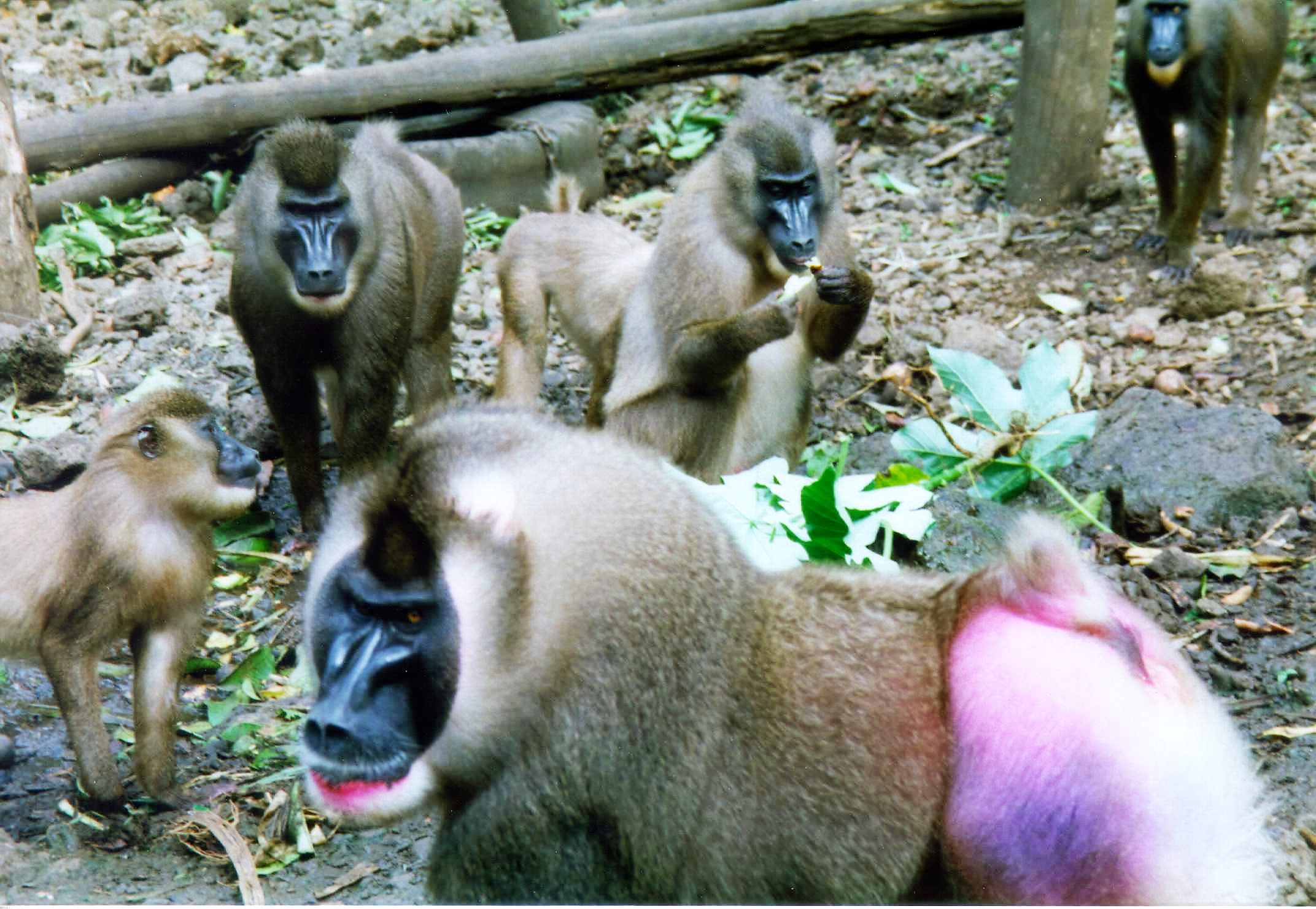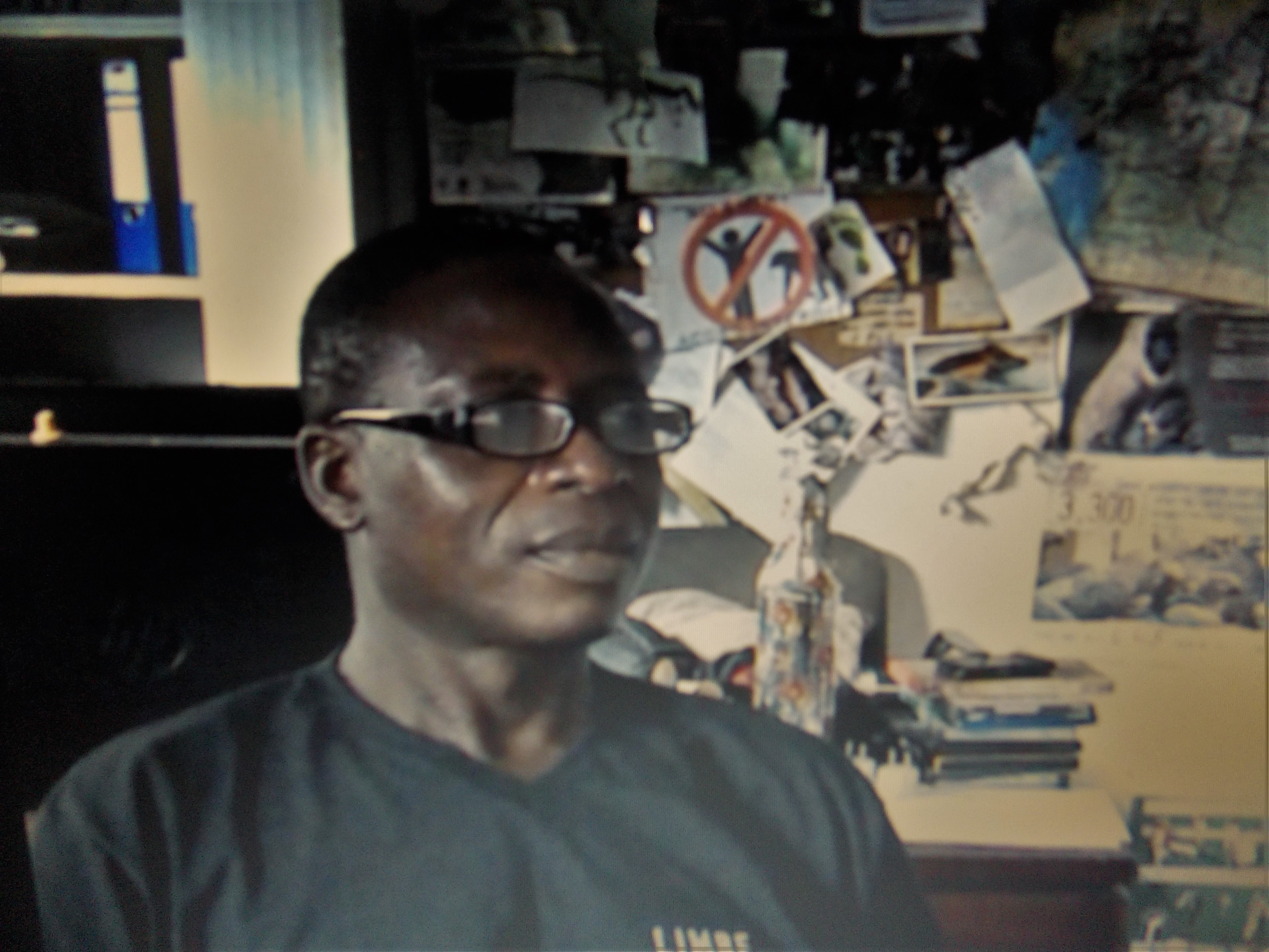Wildlife Rehabilitation in Cameroon
By Israel Binoyi
|
Drills at LWC. Photo credit: Kay Farmer. |
Cameroon straddles West and Central Africa, and its rich biodiversity beckons naturalists from around the world. In the late 1980’s Liza Gadsby and Peter Jenkins (Pandrillus Foundation) began rescuing illegally traded and owned drill monkeys in Nigeria. A similar situation prevailed across the border in Cameroon and their search to find a solution led them to the Victoria Zoo in Limbe, near Douala. In 1993, Pandrillus Foundation and the Ministry of Forestry & Wildlife (MINFOF) created the Limbe Wildlife Centre (LWC) on the site of the dilapidated zoo.
The LWC is one of three wildlife rehabilitation centres in Cameroon (the others being Sanaga Yong Chimpanzee Sanctuary and Ape Action Africa) but LWC uniquely serves multispecies rescue and rehabilitation. LWC is a sanctuary for confiscated wildlife species that were illegally traded and owned. The wildlife residents at LWC include several endangered and threatened primate species such as the Cross River gorilla, Western lowland gorilla, Central chimpanzee, drill monkey, and guenons such as the Preuss monkey. The centre also cares for many non-primate species such as African Grey parrots, Western black mud terrapins, bushbucks, civet cats, crested genets and blue and bay duikers. LWC is now the largest rehabilitation center for the highly traded African Grey parrot, having received more than 3,300 individuals from confiscations since 2007.
In 2013, LWC rehabilitated and released 46% non-primate rescues into National Parks such as Bouba Ndjida and Waza. Dr. Kiyang John Anyam, project manager and veterinarian at LWC, would also like to be able to release the primates back to natural habitat but as the article in this ACT Issue by Humle and Farmer highlights, it is a very complex process that can take many years to fructify, and the LWC would need considerable resources to be able achieve this goal. Given LWC’s urban location, the next phase would be to create a second site in a more rural location, enclosing large forested areas for pre-release acclimation. Even if suitable areas to release the primates can be found, it is likely that many would not be behaviourally, psychologically, or physically fit enough given the long years spent in captivity.
|
Dr. Kiyang John Anyam. Photo credit: Israel Binoyi. |
Dr. Kiyang and the wildlife centre conservator, Mr. Nkeng Philip Sunjo, lead a team comprised of vets and vet nurses, care takers, educators, cooks, cleaners, and volunteers. Ateh Wilson has been with LWC for two decades, working as an animal caregiver and education coordinator. His work involves community mobilisation and outreach in Limbe and nearby villages. Wilson and his colleague, Glen Motumba, also teach environmental science in primary and secondary schools around Limbe. With an average 45,000 visitors annually to the wildlife center, its school outreach programme, nature club, and community engagement render LWC’s role invaluable for biodiversity conservation in Cameroon.
The Limbe Wildlife Centre is a member of the Pan African Sanctuary Alliance (PASA) and is verified by the Global Federation of Animal Sanctuaries (GFAS). For more information visit http://www.limbewildlife.org/.
Israel Binoyi is the assistant editor of ACT.

